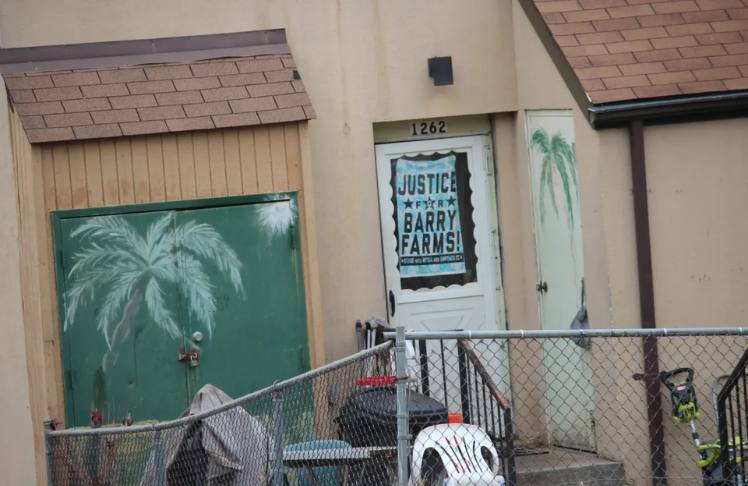
This post was originally published on The Washington Informer
By Barrington M. Salmon
In the 1930s, the federal government, states, real estate brokers, mortgage lenders, and others, engaged in a practice – redlining – that kept African Americans out of white neighborhoods. The practice led to denial areas and neighborhoods where Black people could not get loans and investments because their areas were labeled as high-risk and too sketchy to insure.
In addition to keeping communities white, redlining had the effect of robbing African Americans of countless millions– maybe billions– of dollars, since the practice was codified because of lending and real estate discrimination and disinvestment.
It would be safe to assume that in 2023, redlining is a thing of the past consigned to the proverbial dustbin of history, but to think so would be wrong.
“Now it’s not as obvious or explicit but redlining is extremely pervasive and prevalent in society today,” an official from the US Department of Housing and Urban Development (HUD) told the Washington Informer. “The prevalence hasn’t changed. We fight every day to effect change. We have to be diligent in our efforts to fight it.”
Redlining’s corrosive legacy persists in discriminatory lending, inequities, and disparities in housing practices and how homes are financed. Ultimately, all this has a broad impact on homeownership, the value of homes, and especially on the net worth of African American families and individuals.
There are numerous accounts that at the end of the Second World War, the United States faced a large housing demand as American servicemen and women wanted to buy homes and raise their families. In response, the Federal Housing Administration (FHA) expanded its ability to provide financing and insurance loans. With the feds backing lenders and developers, that reduced risk to banks and those offering mortgages and construction loans.
“The lower risk to lenders resulted in lower interest rates, which granted middle-class people the ability to borrow money to purchase homes,” said Rajeh Saadeh, a real estate and civil rights attorney, in a Banknote story about redlining. “With the new lending policies and larger potential homeowner pool, real estate developers bought huge tracts of land just outside of urban areas and developed them by building numerous homes and turning the areas into today’s suburbs.”
However, many of these new developments had restrictive covenants that barred Black people from buying these homes. Meanwhile, in those parts of cities where large numbers of non-whites lived, the redlining, Saadeh explained, made “them ineligible for federally backed mortgages (which effectively meant, for affordable mortgages, period).”
“Consequently, people of color could not get loans to buy in the suburbs, nor could they borrow to purchase homes in areas in which they were concentrated,” the attorney, who is also a former real estate law professor, said.
Saadeh said the ramification of America’s “systemic, codified policy by the government, mortgage lenders, real estate developers, and real estate agents as a bloc to deprive Black people of homeownership … been generational.”
Andre M. Perry, a senior fellow at the Brookings Institution, and his colleague David Harshbarger, a former research analyst with the Metropolitan Policy Program, co-wrote in a 2019 report titled: “America’s Formerly Redlined Neighborhoods Have Changed, and So Must Solutions to Rectify Them.” The report explained the past continues to haunt the present.
“Together with racially restrictive housing covenants that prohibited Black Americans from buying certain properties, redlining prevented generations of families from gaining equity in homeownership or making improvements to homes already owned,” the report read. “These unjust practices form part of a long history of discrimination, which has contributed to the disparities in homeownership and wealth still observed between the Black and white populations of the country today.”
Even with the passage of the Fair Housing Act in 1968, a range of other forms of discriminatory housing practices have reared their ugly heads. For example, housing experts have documented what some characterize as “reverse redlining,” where banks have engaged in predatory lending in Black and Latino neighborhoods that once were legally redlined. One of the primary reasons for the housing crash in 2008 was mortgage lenders enticing low-income borrowers with hundreds of thousands of risky subprime loans, including “no-doc” and balloon-payment loans. As a consequence, about a half of Black homeowners and a third of Latino homeowners lost their homes and both communities have yet to fully recover.
The HUD representative said agency officials and staff use analytical metrics to uncover evidence of redlining. Where HUD finds lenders aren’t lending to marginalized communities, they go in and force the implementation of remedies as well as investments in affected communities. The official said HUD has also taken a wider, more comprehensive look at different elements of the housing ecosystem, such as appraisals. Recently, there have been several stories about appraisers who value the homes and land of African Americans for hundreds of thousands of dollars less because the owners are Black.
“Redlining is just one of many aspects of Fair Lending aspects. “Appraisals,” the HUD official said, “inform the lender of what the property is worth. There has been a historic undervaluing of communities of color and that continues to be pervasive. We’re looking at agents and brokers. It’s a big task.”
“HUD is definitely taking a hard look at the appraiser ecosystem looking for unnecessary barriers to entry, ways to increase diversity and how to make it easier for Blacks to get into an almost all-white industry.”
The post Redlining is Gone but Entrenched Practices Remain appeared first on The Washington Informer.















